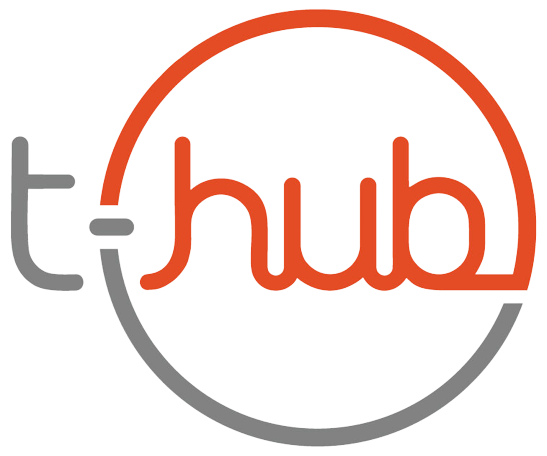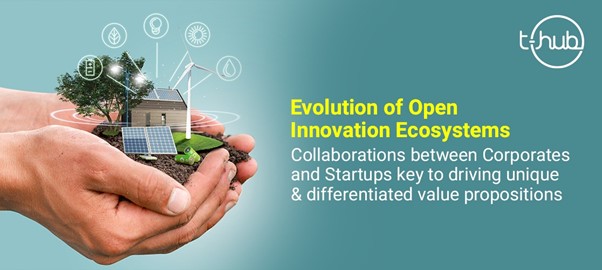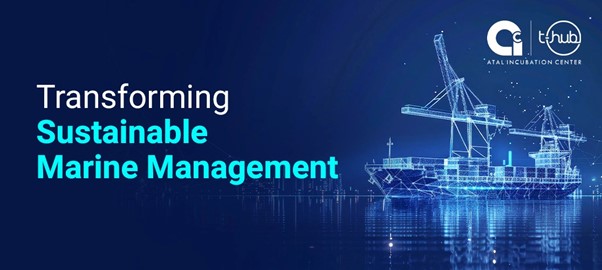What leads a seasoned corporate warrior to embrace the entrepreneurial way of life? The reason was a compelling one for Srikanth Nimmagadda, who decided to found eMpact in 2018 after spending almost two decades across industries and continents with organisations, such as PwC, Deloitte, Barclays Capital and BlackRock. “In my corporate experience in New York and India, I found that there is no canvas available for individual employees to capture their leadership and behavioural skills on a continuous basis and in a measurable, credible and shareable manner. Consequently, there is no system that allows the employer to know how an individual’s leadership and behavioural skills have evolved over a period of time,” says Srikanth.
This realisation led Srikanth to found eMpact, a unique mobile-enabled HR platform that aims to capture the leadership skills of employees from various touchpoints between the employee and the organisation. “I felt that a new take on HR systems is warranted. If business managers are going to keep complaining about the lack of talent and resources, they also need to take ownership of it,” reasons Srikanth. “Founding eMpact was my way of bringing in my managerial exposure to build a unique framework that empowers both the employees and the employer to make employees become stronger and more effective managers and leaders. That was the seed that led me to found the company.”
The startup’s co-founder, Srilatha, joined eMpact recently and comes with extensive experience in talent management. Though the company is mostly bootstrapped, it received a small angel investment funding from a strategic investor in May 2019.
Overcoming real-world organisational challenges
Despite not coming from an HR and talent management background, Srikanth was determined to forge ahead with his entrepreneurial vision. His confidence stemmed from his rich exposure to various cultures and geographies when he had to manage teams across the world, including in the UK, Australia, Tokyo, Hong Kong, Sydney and Seoul. Srikanth then realised that all organisations — big and small — have a common pain point.
“It is not just the financial resources within an organisation that attracts talent. The bigger question is what happens after the talent joins the organisation”
He adds that the onus is on the top management to fill a major gap in the ecosystem: to get more visibility into how an individual’s leadership skills have evolved over the years.
Srikanth illustrates the point through a hypothetical situation wherein an employee has built a solid relationship with his immediate supervisor for, say, a decade. However, in the real world, there is no guarantee that the supervisor with whom the employee has earned credibility and goodwill will be around in the same organisation when the employee is being considered for a key promotion. Thus, in the potential absence of the supervisor, there may be nobody to vouch for the employee when such a requirement arises. Added to this, when a new boss takes over, the employee would have to earn credibility all over again, putting her in an unfair situation. On the flip side, the new boss would also have to start cultivating relationships with existing team members and gauge how the varied talents and personalities gel within the organisation.
In the absence of an app such as eMpact, the hiring committee would have to seek the views of colleagues and the wider team on their opinion about the employee. While there is a lot of credibility in this approach, it may not necessarily be the fairest one for employees as opinions can be biased and influenced by circumstantial factors.
Given the scenario, the eMpact app is poised to be a step in the right direction for organisations that are serious about hiring and retaining talent.
Empowering employees
The eMpact app allows the individual to get a fair chance to build a canvas over a period of time, putting in place a system wherein feedback from colleagues can be cross-checked and verified against the canvas. Thus, in the real world, senior management may not be influenced by unfavourable opinions received from an employee’s colleagues as they could opt to compare it against the individual’s personality traits and leadership skills available on the app’s canvas.
This feature can be supported with a real-world example. Among the talent pool being interviewed for, say, a CEO position, the candidates’ technical skills will by and large be similar. However, their individual personality traits and leadership skills may be different. Assessing such skills will be the clincher that will decide who is the most suitable candidate for the top job.
“Since I come from a financial background, this situation made me think about the CIBIL system and how it made the financial ecosystem very efficient by empowering both the borrowers and the lenders,” says Srikanth. “In a parallel universe, employees are made to put themselves in a very difficult position time and again because organisations have not created a CIBIL-like canvas where employees can effectively capture their leadership and behavioural traits over the years on a continuum,” says Srikanth.
Since eMpact is in a digital format, it democratises the entire leadership initiative from the day somebody joins an organisation. As the employee starts cultivating professional relationships from day one, it enables senior management to track how she will evolve in the organisation over the years. This forms a critical evaluation step when employees are being considered for additional responsibilities within the organisation or even departmental transfers. As Srikanth puts it, “eMpact is all about empowering individuals in the organisation to help them have a say in key career decisions involving them.”
Benefiting from a support system
Srikanth acknowledges that being a part of T-Hub has allowed him to be “plugged-in” to the startup ecosystem of Hyderabad and beyond. The startup has received benefits such as free credits with technology and software providers, including from Google, Amazon and Zoho. T-Hub has also helped eMpact connect with an effective mentor to navigate the HR world.
Srikanth counts HRD legend Dr T.V. Rao’s involvement in eMpact as an adviser and mentor as a fortuitous milestone in the startup’s journey.
Understanding the app’s canvas
Currently, the eMpact app is in Phase 1 of its rollout and contains three modules:
Module 1: Peer-to-peer endorsement module
Module 2: Mentoring module
Module 3: Learning and development module.
The first module is similar to LinkedIn endorsements but is only for those who work in the same organisation. The endorsement concept on eMpact has the accountability factor because the behaviour of the individual giving the endorsement and the one receiving it feeds and influences the algorithm that curates the individual employee’s profile.
Through the app, an employee, from time to time, can invite her managers, mentors and peers and ask them to identify her key traits and competencies that have a positive impact on them. The responses received on the app are fed into an algorithm. Similarly, the employee’s engagement in the app with all the mentors, peers and with the learning and development material also feeds the algorithm that will eventually be the placeholder for how one’s personality is evolving in the organisation.
The Learning and Development module records the training programs the employee participates in and all the reading material she consumes for her professional growth and development. The core essence of the canvas is to record every touchpoint the employee has with the organisation by feeding it into her profile. Also, the app identifies gaps in an employee’s skillsets and recommends corrective measures, such as attending negotiation workshops if the individual lacks skills in that area.
How engaged an employee stays with the eMpact app depends on her confidence, motivation and ownership of her job. Though these parameters will vary from person to person in the organisation, eMpact empowers employees by giving them a level playing field to create their profile on the canvas at the speed and intensity that they want.
An employee’s profile cannot be accessed by one’s immediate boss and is visible only to HR and senior management to form their assessments of the employee based on input received in the app.
“My belief is that in a world where attrition is a big pain point, organisations are unsure which individuals will prove to be apt for a leadership role in the longer term. Thus, organisations cannot determine how much time and money to invest in various individuals,” says Srikanth. In his view, the eMpact app will help organisations to judiciously invest their time and money in all the individuals from day one of the employee-employer relationship without straining the organisational’s limited resources.
Tackling other challenges
Srikanth believes that as there is room for personal biases to creep in during real-world employee appraisal systems, it becomes all the more essential to create a platform that is going to assess the biases objectively. “We know that we cannot remove the bias, but through eMpact, employees are given a fair chance to capture the real essence of their personality for senior management,” he says. “Even a 360-degree appraisal system may not be able to capture all the employee touchpoints as well as eMpact does.”
For Srikanth, pitching the app to potential customers has proved to be a great learning experience. He realised that organisations are slow to embrace an app as unique as eMpact, primarily because HR is a sensitive topic. “Things have not been as fast as I hoped it would be. This is a challenge that I have had to navigate in the last 12–15 months,” he says. He believes this could be attributed to the conservative approach of HR in not just India, but in Western markets, too.
Competition and the way forward
In terms of existing competition available in the market, alternative HR platforms, such as psychometric tests, are popular models to understand an employee’s personality. Additionally, appraisals and annual evaluation software and AI-enabled platforms for onboarding are also available. However, eMpact seeks to stand apart from the rest as it is a canvas that evaluates employees on a continuous basis over a long period of time. It overcomes the limitations of the point-of-time assessments that have proven to have only a window-of-time efficacy.
Srikanth is of the view that apps such as eMpact will not make the role of HR redundant but would instead complement their contribution and recalibrate their focus areas and intervention needs. “If I can measure the eMVP, the eMpact Value Points, as the benchmark within and across organisations, it will be mission accomplished for eMpact,” he sums up on his long-term vision for his startup.






